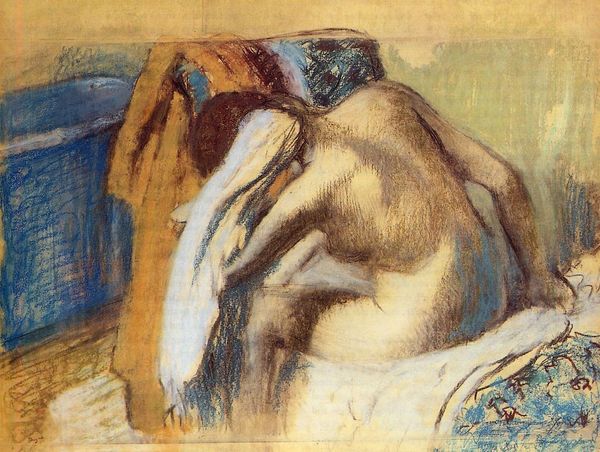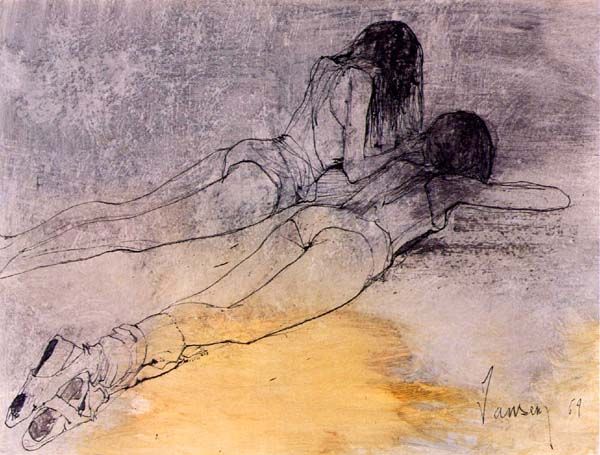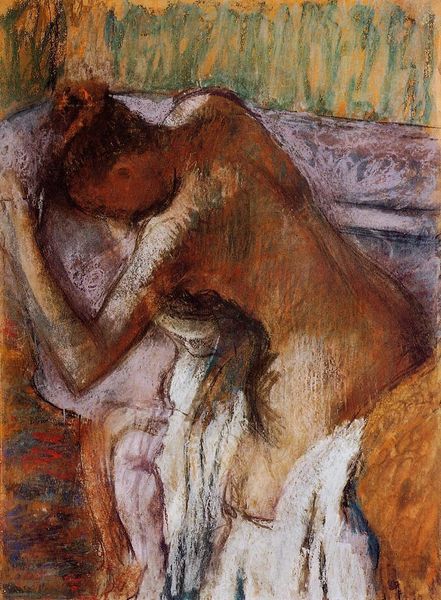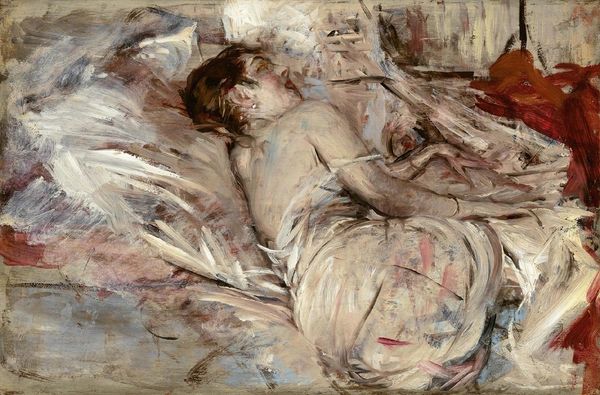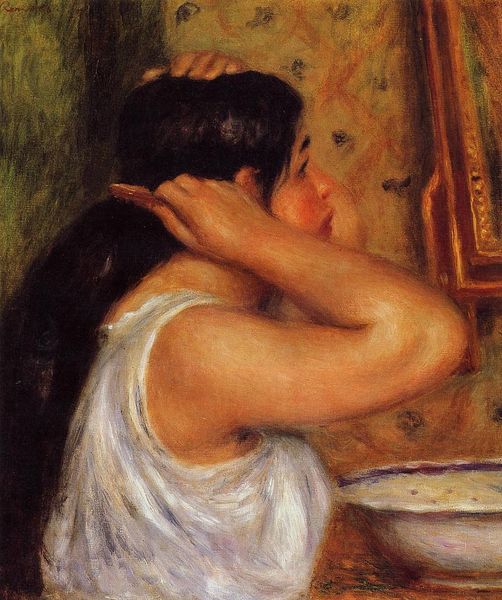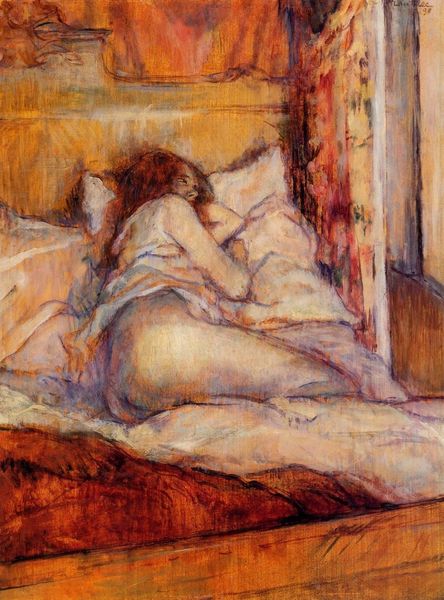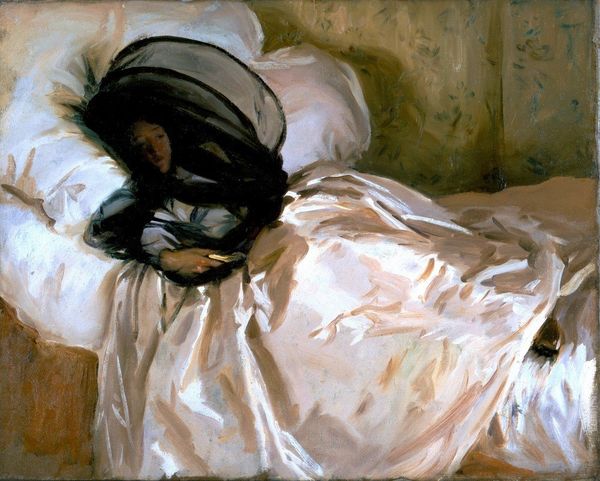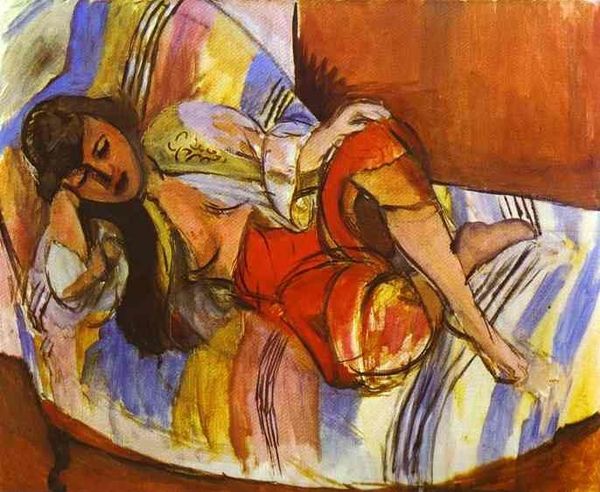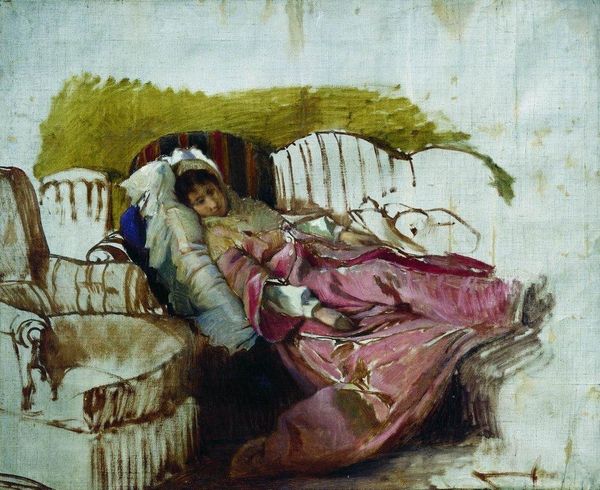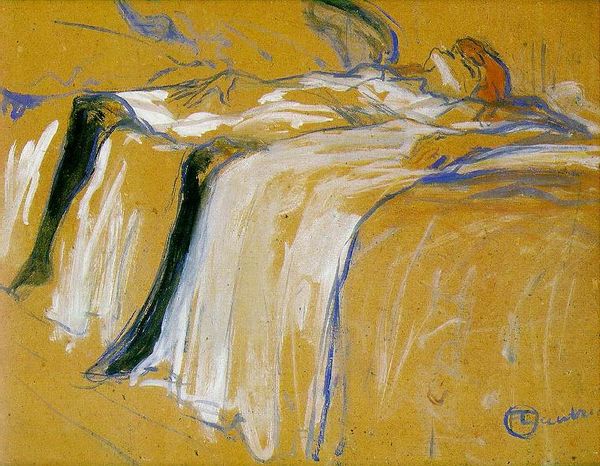
painting, oil-paint
#
portrait
#
painting
#
oil-paint
#
oil painting
#
symbolism
#
genre-painting
#
realism
Copyright: Public domain
Curator: Santiago Rusiñol’s “Before the Morphine,” completed in 1890, presents us with a potent image steeped in the anxieties of its time. Editor: Wow, even at first glance, this painting evokes a raw kind of sorrow, doesn’t it? It's more than just melancholy; there's an edge of something darker, something almost desperate hanging in the air. You can feel the loneliness. Curator: Rusiñol painted this during a period of intense interest in psychological states, particularly as they related to addiction. The piece uses oil on canvas, a fairly common medium but one that allowed for subtle layering and the creation of that somber atmosphere. It's hard not to think about laudanum and absinthe. Editor: That layering you mentioned is so key. See how the light kind of crawls over the figure and the bedclothes? It gives everything a sickly pallor, heightening the sense of unease. The bedsheets aren't exactly crisp, and the palette is muted to heighten the subject’s state. What is she doing? Lighting a cigarette? Curator: Likely a cigarette, or perhaps opium. The act is really secondary to the sense of suspended time and internal drama. During this period, anxieties surrounding modernity and social ills were frequently expressed through images like these. It wasn't just about depicting addiction; it was about hinting at larger societal anxieties and questioning personal choice versus the pervasive environment. Editor: It’s the contrast between the fragility of the figure and the heaviness of the shadowed room that hits me. She’s perched there, almost like a bird about to take flight or... or fall from the branch. You almost feel the urge to reach into the canvas to try and support her. Curator: Indeed. Rusiñol uses the setting – the dishevelled bed, the encroaching darkness – to underline the vulnerability of the figure. The 'genre-painting' aspects tie it to familiar visual storytelling while its Symbolist elements invite broader allegorical interpretation about human condition, morality, and helplessness in society. Editor: It's interesting to me how Rusiñol used those aesthetic touches to turn this image into such an evocative visual representation. In many ways, “Before the Morphine” captures an atmosphere we rarely acknowledge. Curator: Precisely. This is more than just a record; it's an analysis—an image that encapsulates a historical discourse through the potent, subtle power of art.
Comments
No comments
Be the first to comment and join the conversation on the ultimate creative platform.
